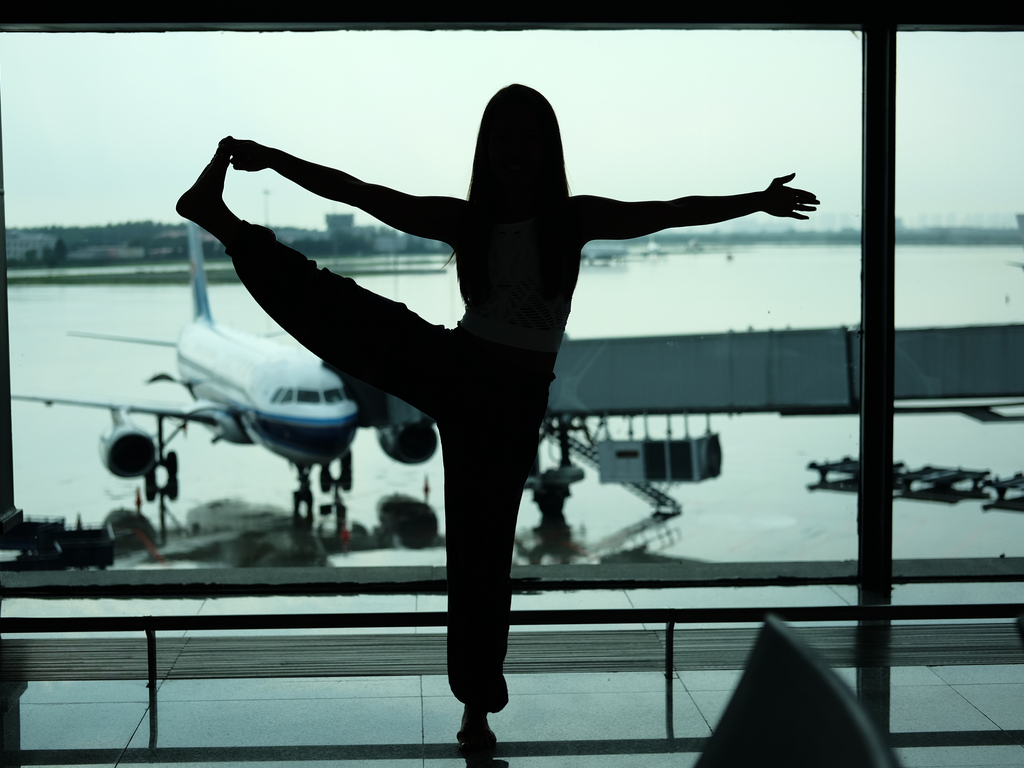Hey There!
I'm Reina
I am a full-time traveling registered nurse, fitness enthusiast, and nutrition expert. Every morning I wake up intending to bring awareness of the importance of health and spiritual wellness, especially to the traveling community. At Messy Bun Traveler, we promote travel that allows the traveler to either kick-start, maintain, or enhance a healthy lifestyle. So whether you're someone who travels for business, travels for pleasure, or new to travel and looking for health advice while on the road, this blog is for you!
inspiration
Categories:
health
destinations
fitness
resources
wellness
Privacy & Disclosure
The Messy Bun Traveler is designed to bring you fun stories, destination guides, and healthy travel advice. To help cover the cost of running this site, all posts are sprinkled with hand-selected affiliate links. When you click on one of these links and make a purchase, I will earn a small commission at no additional cost to you. I only accept affiliate links and paid advertisements from brands I believe in, trust and use personally. Thank you for your continued support!
Back Pain While Traveling: Tips for Staying Pain Free
July 18, 2019

Traveling with back pain can make sitting on an endlessly long plane ride or lugging around a heavy suitcase feel like torture.
That doesn’t mean your backache should prevent you from exploring the world. The following tips will help you support your spine and reduce your pain when you travel.
Here are a few key tips to avoid back pain while traveling: from driving, sitting in a car, flying, or just sleeping somewhere new.
Summary
Before reading, please note: These tips I have compiled for you are general guidelines only. I strongly recommend consulting with your physician or nurse practitioner before deciding to travel with any severe back pain or chronic back ailments.
Back pain while traveling: What to do before your trip
Pack light and use wheels.
When traveling with a carry-on, bring only the items you really need on board with you. If traveling with a carry-on is too much weight, it may be best to check your bag and just carry a personal item on you. Your personal item can just hold essential items like ID, boarding passes, wallet, and cell phone.
If you want to save the extra fee by using carry-on instead of checked baggage, go with rolling luggage. With duffel bags and backpacks, you’ll just put added weight and stress on your spine.
Pack a comfort kit
Make sure you bring plenty of TSA-approved heat wraps (Thermacare is a great option), cold packs, and soothing cream (my personal favorite is Bio Freeze).
Alternating between heat and cold about every half hour can help alleviate back pain. The heat therapy helps stretch the tissues around the spine causing muscle relaxation and the cold therapy can reduce back swelling—another cause of back pain.
Other items you can bring in your comfort kit are a small neck pillow to support your neck and upper spine, or a rolled-up blanket placed on your lower back for added lumbar support.
Keeping a rolled-up blanket at your lower back is a great way to prevent slouching and helps keep your spine in a neutral, straight position.
see also:
Stretch your back and hamstrings
Before boarding your flight, make sure to take some time to really stretch out the muscles, tendons, and ligaments that help support the spine. Doing so will help relieve tension and keep the muscles relaxed during your long-haul flight or road trip.
See also:
Lift luggage in stages and use proper body mechanics
A great way to aggravate an already sensitive back is to strain it while lifting heavy luggage. If you’re not using proper body mechanics or being conscientious of your range of motion, you can cause serious back strain.
It is recommended to move baggage slowly and in stages. For example, when trying to get your luggage into an overhead bin, lift the luggage to the top of a seat first, then proceed to move it to the overhead bin.
Other proper body mechanic tips to follow include:
- Bend at the knees and not at the waist when doing any heavy lifting. Using your leg muscles rather than using your back muscles will help decrease any strain.
- Avoid any twisting of the lower back while lifting. Instead, try pivoting with your feet
- If you’re not using luggage with wheels, make sure you’re carrying your backpack or duffle bag as close to the body as possible.
- Also, make sure you’re distributing the weight evenly. When using a backpack, make sure to use BOTH shoulder straps versus just carrying it on one shoulder. When using a duffle bag, make sure you’re alternating shoulders regularly to avoid stressing one side of the back or causing a twist at the spine.
Back pain while traveling: What to do during your trip
Wear comfortable clothing
Stick to wearing comfortable clothing that won’t bend or constrict your movements. Wearing pants that are too tight, although cute, is not ideal to wear on a plane.
Comfortable, loose clothing will allow your body to move much more freely, relax fully, and feel right at home.
The last thing you want to do is worry about sitting upright and still for fear of wrinkles in your fancy button-up top. All this will do is contribute to muscle aches from the restriction of blood flow to certain areas of the body.
Get up at least every hour to two hours
I know it’s easy to just want to power through your long flight or road trip, but doctors recommend getting up and stretching at least every two hours.
One of the main causes of back pain while traveling is muscle tension due to prolonged sitting. Getting out of your seat regularly will not only combat lower back pain but also prevent aches and pains in your legs from prolonged sitting. If you’re afraid of disturbing people from getting up regularly, try and score an aisle seat.
Drink plenty of water and rest
Staying well hydrated will keep fluid circulating regularly in your body, including around your muscles. The fluid acts as a cushion for muscles, bones, and joints in order to keep everything operating smooth and pain-free.
Watch your posture
Unfortunately, the seats on planes and even cars do not provide the best lower back support or neck support. This is where the rolled-up blanket comes in handy to help support the inward curvature of your lower back.
Alternate between heat and ice
Use the items you brought in your comfort kit!
If the back pain starts becoming intense, you can ask the flight attendant for a bag of ice. Also, over-the-counter pain medication such as Tylenol or Motrin helps too.
See also:
Support your feet
If your legs are not positioned at a right angle while sitting in an airplane seat, try using something (such as a pillow) to prop up your feet and keep your knees at a right angle.
By maintaining good posture and foot support, you’ll take stress off your lower back.
If you’re driving, resting both feet on the floor helps provide support for the lower back. So if you’re taking a long road trip, consider using cruise control for longer drives.
Back pain while traveling: What to do after your trip
Move around
You’re finally off your flight, phew! Now get up and move! Get the blood circulating through your body and tense muscles in order to prevent stiffness and soreness after your flight.
Stretch
Even stretching after your flight is beneficial as well. It helps by relieving tension in the muscles supporting the spine, improving range of motion and mobility, and reducing the risk of injury or severe pain.


The next time you have to travel for work or pleasure, keep these tips in mind to help avoid back pain. By following a few simple guidelines and being proactive about your health, you can enjoy your trip without dealing with unnecessary pain.
And if all else fails and you still experience some discomfort, be sure to consult a doctor – they may be able to give you some helpful advice or prescribe medication that will make your journey more comfortable.
I hope these tips help and happy travels!
Join my newsletter
* We will never share your details with any third party